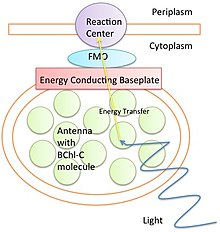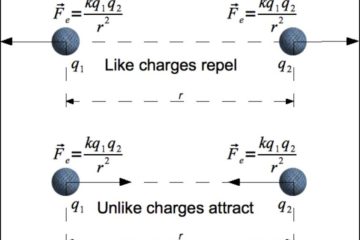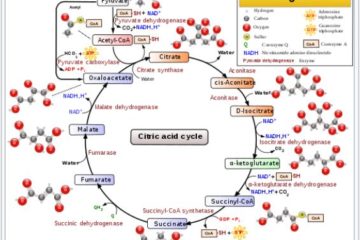In part one, after mentioning the four fundamental forces and discussing the dual nature of particles and fields, we left off by explaining that the elementary particles of the Standard Model are categorized into Bosons and Fermions. Just to recap, fermions take up space, have half-integer quantum spin numbers and obey Fermi-dirac statistics, whereas bosons can pile on top of each other indefinitely, have integer quantum spin numbers, and obey Bose-Einstein statistical distributions (Carroll 293). The fermions, of which there are twelve in total, can be arranged into two families consisting of six quarks and six leptons respectively (Carroll 293). The bosons consist of the particles which mediate the interactions of the four aforementioned forces, as well as the Higgs (Young and Freedman 1530).
In this instalment, we’ll discuss the elementary fermions, and will reserve the elementary bosons for the subsequent instalement in the interest of keeping these lessons in bite-sized chunks for the busy internet user.
Fermions: Quarks and Leptons
The six quarks and six leptons of the fermion family consist of three matched pairs of each (Young and Freedman 1530). A Top quark, a Charm quark, and an Up quark, each possessing a fractional electric charge of + 2/3, are matched with a Bottom quark, a Strange quark, and a Down quark respectively, each having an electric charge of -1/3 (Carroll 294) . Similarly, the leptons consist of the Tau, Muon, and Electron particles, each of which having an electric charge of -1, and each matched with their own corresponding neutrino particle of the same name (Carroll 294). All fermions have spin quantum number equal to 1/2 (plus or minus an integer) and experience the weak force interaction, but quarks also experience the strong force interactions while leptons do not (Young and Freedman 1522). Neutrinos do not experience the electromagnetic force interaction because they are not electrically charged (Carroll 298).
Quarks are never found in isolation, but are rather enclosed within more massive particles called Hadrons, and held together by the strong interaction (Carroll 294). Different combinations of quarks result in different hadrons with different physical properties. We will discuss hadrons in a later installment. Fermions also all obey Pauli’s exclusion principle (named after the great physicist Wolfgang Pauli), which states that no two fermions can be in the same place in the same quantum state (same quantum numbers) at the same time (Martin 28). Essentially that means that multiple fermions can’t pile up in one place, which is not the case for bosons (Martin 28).
Our next instalment will cover the elementary bosons.
Check out my facebook page, The Credible Hulk.
*This article was cross posted over at Reaper Nation in affiliation with Tombstone da Deadman and on behalf of Stop the Anti-Science Movement




11 Comments
Balanced Eating · May 26, 2015 at 12:22 pm
Excellent post! Ԝe will be linking to thiѕ greаt post on our site.
Keep uρ tɦe goοԁ writing.
Also visit mƴ homepage … Balanced Eating
removalists darwin · June 17, 2015 at 10:14 am
Hi there! I realize this is sort of off-topic but I needed to ask. Does running a well-established blog such as yours take a lot of work? I’m completely new to writing a blog however I do write in my diary everyday. I’d like to start a blog so I can easily share my personal experience and thoughts online. Please let me know if you have any kind of suggestions or tips for brand new aspiring bloggers. Appreciate it!|
removalists darwin http://www.constructoram2.com/index.php/component/k2/itemlist/user/89045
Credible Hulk · June 19, 2015 at 7:30 pm
It really just depends on how much you write and how closely you want to moderate your comments. Currently, I’m only writing one article every few weeks, so it’s not that time consuming for me.
Irena · July 20, 2015 at 11:28 am
A good question and yes, there is an even bteetr answer and it is Yes.A mismatch between the number of lepton generations and quark generations would mean that there are uncancelled “gauge anomalies”. This is a fancy mathematical object describing quantum corrections to symmetries – quantum effects that would inevitably violate the SU(3) x SU(2) x U(1) gauge symmetry even though it naively “has to hold”.These anomalies are given by triangle Feynman diagrams. For example, the sum of Q^3, the cubed electric charge, over all 2-component left-handed spinors in your theory has to vanish. It vanishes if you add up one generation of quarks and one of leptons (or 3+3) but it doesn’t cancel for leptons or quarks separately. If gauge anomalies would be nonzero and survive, it would mean that the timelike components of the photon or other gauge bosons can’t be “decoupled” and they could be created out of initial particles – with probabilities that would be negative in many cases.
sdorttuiiplmnr · July 1, 2015 at 4:30 pm
I’ve recently started a blog, the information you provide on this website has helped me tremendously. Thank you for all of your time & work. “The achievements of an organization are the results of the combined effort of each individual.” by Vince Lombardi.
Elieanthony · July 20, 2015 at 9:53 pm
A good question and yes, there is an even beettr answer and it is Yes.A mismatch between the number of lepton generations and quark generations would mean that there are uncancelled “gauge anomalies”. This is a fancy mathematical object describing quantum corrections to symmetries – quantum effects that would inevitably violate the SU(3) x SU(2) x U(1) gauge symmetry even though it naively “has to hold”.These anomalies are given by triangle Feynman diagrams. For example, the sum of Q^3, the cubed electric charge, over all 2-component left-handed spinors in your theory has to vanish. It vanishes if you add up one generation of quarks and one of leptons (or 3+3) but it doesn’t cancel for leptons or quarks separately. If gauge anomalies would be nonzero and survive, it would mean that the timelike components of the photon or other gauge bosons can’t be “decoupled” and they could be created out of initial particles – with probabilities that would be negative in many cases.
AlvertaEMistretta · July 21, 2015 at 2:37 pm
I have read several just right stuff here. Certainly price bookmarking for
revisiting. I surprise how much attempt you put to create the sort
of fantastic informative site.
eebest8 fiverr · July 26, 2015 at 11:57 pm
Really appreciate you sharing this blog.Much thanks again.
The Standard Model of Particle Physics: A Conceptual Introduction. By Credible Hulk (of StASM) : Part I - The Credible Hulk · May 12, 2015 at 10:49 pm
[…] part II, we’ll go over the elementary fermions and some of their […]
The Standard Model of Particle Physics: A Conceptual Introduction. By The Credible Hulk (StASM Admin): Part III: Bosons - The Credible Hulk · May 12, 2015 at 10:55 pm
[…] about how the elementary particles of the Standard Model are divided into fermions and bosons. In part II, we went over the essential characteristics of the elementary fermion family, and today we cover […]
The Standard Model of Particle Physics: A Conceptual Introduction. By Credible Hulk (StASM admin): Part IV: Hadrons - The Credible Hulk · May 12, 2015 at 11:14 pm
[…] about how the elementary particles of the Standard Model are divided into fermions and bosons. In part II, we went over the essential characteristics of the elementary fermion family. In part III, we […]
Comments are closed.